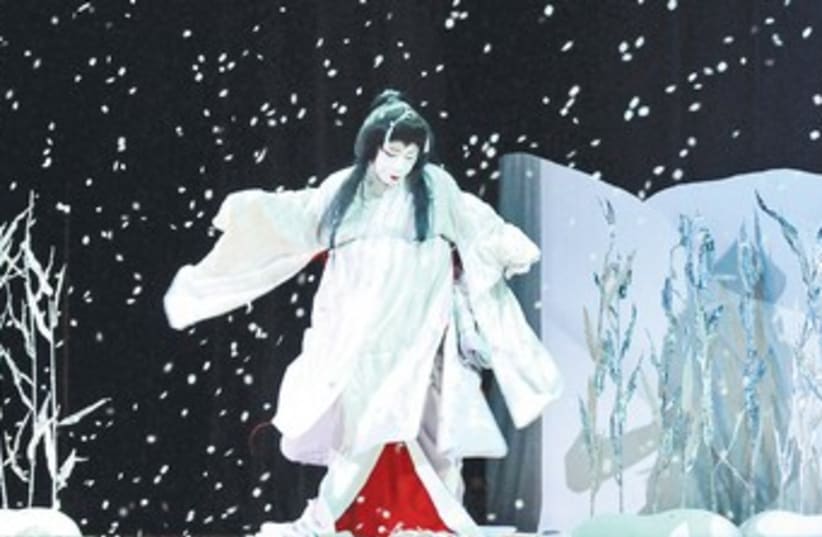Sagi Musume was first performed in 1762 as part of a group of dances. Thought to be based on an old play by Chikamatsu, the dance tells the story of a woman who returns from the grave in the form of a crane to seek revenge on her unfaithful husband. At the beginning of the piece, the maiden is seen dressed in white against a backdrop of snow. As the scene progresses, the maiden in the white cloak is replaced by a woman in a deep red dress. She goes on to dance a happy gig, filled with love and passion. Moments later, the ghost-like creature returns to remind the audience of the unhappy future that awaits her redcloaked counterpart.Shakkyo is considered to be one of the most technically demanding dances in the kabuki repertoire. The piece tells the story of a monk’s pilgrimage to Mount Zeiryo in China that is interrupted by the appearance of lions. These creatures, whose movements account for the difficulty in this dance, stop the main character as he crosses a narrow stone bridge.The dance of the shishi, or lions, is a happy one that expresses deep devotion.Since his childhood, choreographer Fujima Kanjuro has been exposed to the white face paint and sweeping robes of kabuki. The descendant of a long line of kabuki artists, Kanjuro’s path to the stage began at a young age, watching his mother direct actors and dancers. At 22, Kanjuro struck out on his own, becoming a recognized choreographer. In the 10 years since, he has presented his interpretation of kabuki around the world. In 2003, he was awarded the prestigious New Artist Award/ Minister of Education and Science’s Award for the Arts.Kanjuro is the director of the Fujima School of Nihon Buyo (traditional Japanese dance) and is an active composer of classical music. And though Kanjuro is known to take the stage, he has commented many times that in kabuki, he is happy to remain a furitsuki-shi, or behind-the-scenes artist.
Kabuki Dance will run at the Suzanne Dellal Center in Tel Aviv on September 6 and 7. For more information, visit www.suzannedellal.org.il.Follow @JPost_Lifestyle
